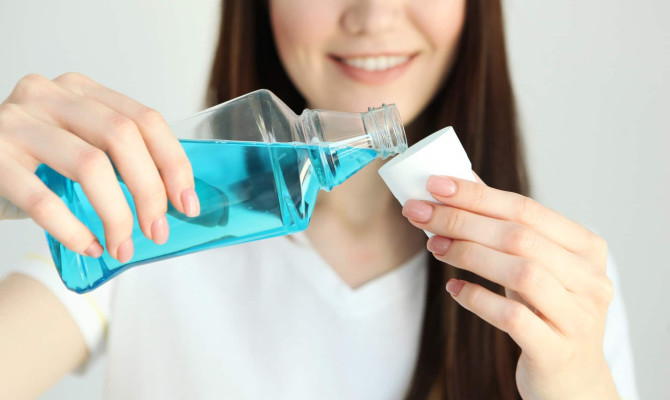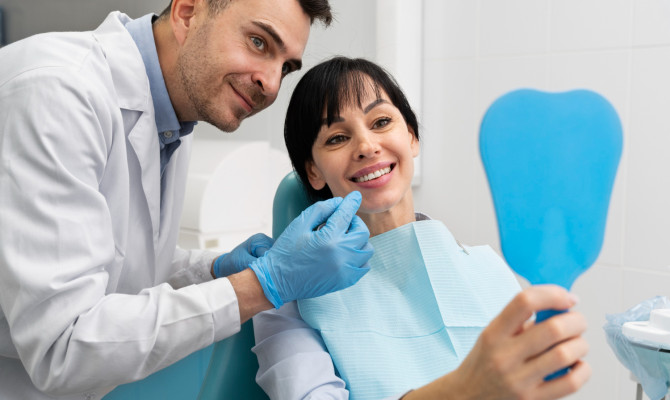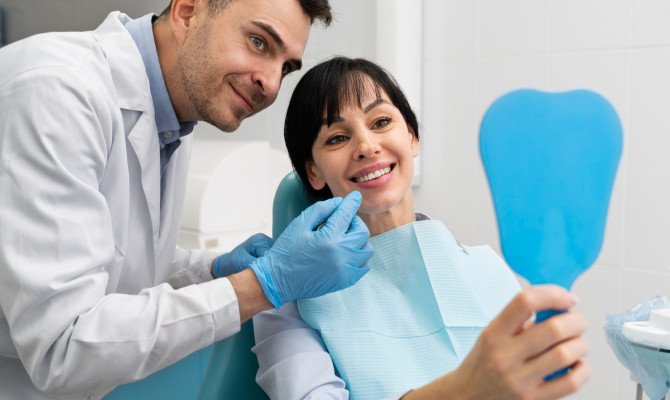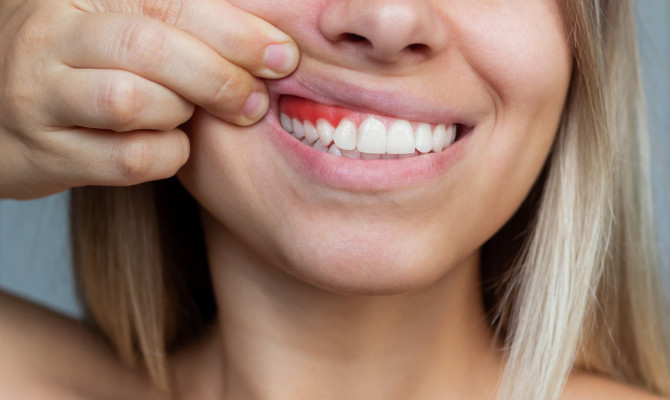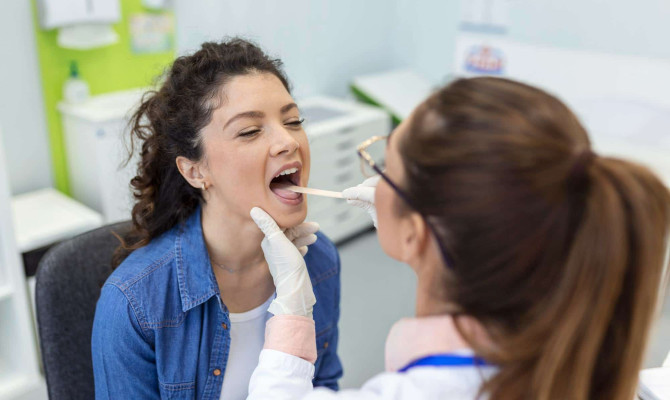Why Does Mouthwash Burn? Side Effects, Precautions & Alternatives

- Mouthwash
- 11 Sep 2023
Introduction
Why You Should Use Mouthwash
Mouthwash can get between teeth much like dental and water flossers, and interdental brushes. Mouthwash can assist with the following:
- Control or prevent tooth deterioration
- Reduce the bacterial film that forms on teeth, called plaque
- Slowing down the rate at which tartar (hardened plaque) accumulates on teeth, or achieving a combination of these results
- Improves breath
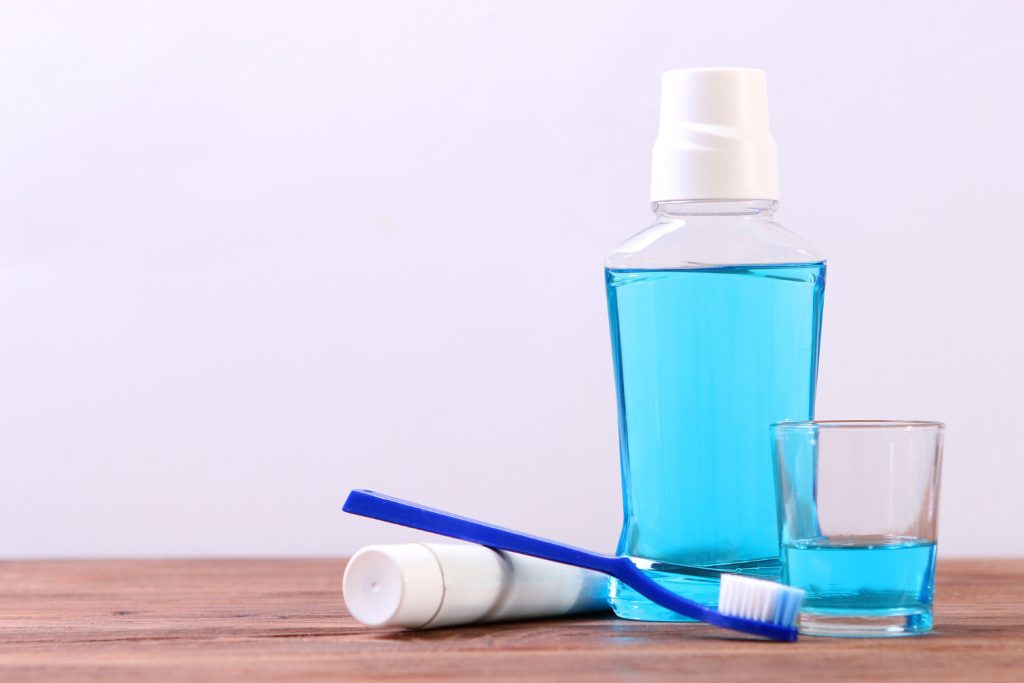
Children under the age of six should not use mouthwash unless a dentist advises them to because children below six years may not have fully developed swallowing reflexes, leading them to ingest excessive volumes of mouthwash, which can result in negative side effects like feeling nauseous, throwing up, and intoxicated (because of the alcohol component in some rinses). 2 Introduction | Researched based study from American Dental Association
Types
What Are the Different Types of Mouthwashes?
There are mainly two different kinds of mouthwashes:
- Cosmetic
- Therapeutic
Cosmetic Mouthwashes:
- Cosmetic mouth rinses may briefly reduce bad breath and leave behind a nice flavor, but they do not have any additional chemical or biological functions.
- The active chemicals in therapeutic mouth rinses, in contrast, are used to manage or lessen disorders including foul breath, gum disease, dental plaque, and cavities.
Therapeutic Mouthwashes:
- Therapeutic mouthwashes contain substances that actively combat germs, assisting in preventing the development of plaque, gingivitis, cavities, and bad breath.
- Fluoride-containing mouthwashes aid in avoiding or minimizing tooth decay. 2 Types | Researched based study from American Dental Association
Composition
What Does Mouthwash Contain?
There are many different substances in mouthwash,they are:
- Antimicrobial – chlorhexidine gluconate
- Antimicrobial – povidone-iodine
- Analgesic, antibacterial, and anti-inflammatory – Benzydamine hydrochloride
- Some common essential oils include methyl salicylate, thymol, eucalyptol, and menthol. Usually, alcohol-based solutions are utilized to make these.
- Cetylpyridinium chloride antibiotics
- Anti-inflammatory and antibacterial triclosan
- Antimicrobial sodium hypochlorite (diluted chlorine bleach)
- Hydrogen peroxide – A disinfectant and antibacterial
- Lactoperoxidase, glucose oxidase, lysozyme, and lactoferrin are anti-bacterial peroxidase enzymes
- Remineralizing and antibacterial fluoride
- Alkalinizer sodium bicarbonate. 3 Composition | Researched based study from DermNet
Indications

Indications For Using Mouthwash
Bad Breath:
- The main cause of poor breath or mouth odor is volatile sulfur compounds (VSCs).
- They come from a range of sources, including bacteria linked to oral diseases, tooth plaque, and food breakdown.
- Cosmetic mouth rinses do not affect germs or VSCs, but they can temporarily cover foul breath and offer a pleasant flavor.
- However, mouthwashes containing therapeutic ingredients like antimicrobials may be more successful in controlling foul breath over the long run.
- Antimicrobials found in mouth rinse formulations are ionone, ketone, terpene, and zinc salts are some other anti-odorants found in mouth rinses.
- Although it has been demonstrated that the mixture of zinc lactate, cetylpyridinium chloride, and chlorhexidine drastically decreases bad breath, it may also significantly increase tooth discoloration. 1 Indications | Researched based study from American Dental Association
Dry Socket:
- A common postoperative complication following dental extraction surgeries, especially in those involving the third molar, is alveolar osteitis (AO), often referred to as dry socket.
- Two to three days following the treatment, AO frequently causes excruciating pain at the extraction site and around.
- Mouthwash is efficient at reducing the risk of AO after third molar extractions without the need for antibiotics.
- The gel formulation showed a modest improvement in efficacy over the rinse formulation.
- Few mouthwashes may cause mild, non-clinical responses, such as taste changes and discoloration of the tongue, dentures, and teeth.
Plaque and Gum Disease:
- Combining daily brushing and flossing with antimicrobial mouth rinses has been demonstrated to help reduce plaque and gingivitis.
- While other studies revealed that essential oils and chlorhexidine both effectively controlled plaque, there was no difference in how well they managed gingivitis.
- Chlorhexidine and cetylpyridinium chloride both have the potential to brown-stain teeth and restorations.
Concern for Oral Cancer:
- Cancers of the head and neck are known to be increased by alcohol usage, tobacco use, and other risk factors.
- When hydrogen peroxide or carbamide peroxide are included in the active ingredients of the mouthwash, mouth rinse may aid in the reduction of extrinsic stains.
- Dentists may give their patients carbamide peroxide-based products for use at home that typically contain 10 % carbamide peroxide. 1 Indications | Researched based study from American Dental Association
- Mouthwashes that promise to whiten teeth may additionally include 1.5 to 2 % hydrogen peroxide. 1 Indications | Researched based study from American Dental Association
Dental Decay:
- Some mouth rinses contain fluoride ions, which aid in remineralization.
- Regardless of exposure to alternative fluoride sources (such as fluoridated water or fluoride-containing toothpaste), regular use of fluoride mouth rinse prevented dental decay in children.
Topical Pain Management:
- Topical local anesthetics are most frequently found in mouthwashes that relieve pain.
- Additionally, glycyrrhetinic acid, polyvinylpyrrolidone, and sodium hyaluronate may function as a barrier to ease discomfort brought on by oral lesions such as aphthous ulcers.
Preoperative Mouthwash:
- Aerosols, a mixture of liquid and solid particles, are produced by some dental tools and processes, such as ultrasonic scalers, air-water syringes, teeth polishing, teeth polishing with air turbine handpieces or air abrasion.
- Before settling on nearby surfaces, aerosols can stay in the air for as long as four hours.
- Aerosols containing bacteria can be inhaled by dental professionals, creating a risk for spreading illnesses in addition to collecting on environmental surfaces.
- Aerosols are linked to respiratory illnesses such as COVID-19 SARS-CoV-2, TB, and the flu.
Xerostomia:
- A decrease in the amount of saliva that covers the oral mucous membranes is known as xerostomia.
- A mouth rinse with fluoride may be beneficial for persons dealing with this issue because a lack of saliva raises the risk of caries.
- However, it could be advisable to suggest an alcohol-free mouth rinse given that alcohol can be drying.
- The composition and feel of saliva can be mimicked by mouthwashes containing enzymes, cellulose derivatives, and animal mucins, which may offer further alleviation from xerostomia-related symptoms. 1 Indications | Researched based study from American Dental Association
Reasons
Why Does Mouthwash Burn?
Many mouth rinse solutions contain alcohol as a key ingredient because of its antibacterial qualities. It sanitizes the oral cavity and eliminates microorganisms. However, pure alcohol is insufficient to eliminate all the harmful germs that can result in gingivitis and bad breath.
One of the active components of mouthwash is alcohol. Menthol can be one of the others. Some mouthwash recipes have an alcohol content of more than 25%. 6Reasons | Researched based study from Poison Control
- That burning sensation is concentrated on the tongue when we use an oral rinse.
- The tongue’s taste buds may be more susceptible to the flavor and texture of alcohol than other parts of the mouth.
- If the burning continues after switching to a mouthwash without alcohol, it may be sensitive to one of the mouthwash’s two active ingredients.
- Two typical mouthwash chemicals are cetylpyridinium chloride, which kills bacteria that produce foul breath, and chlorhexidine, which may help cure gingivitis and reduce plaque.
- A common ingredient in mouthwash with teeth-whitening anticipates is hydrogen peroxide.
- To freshen the breath, mouthwash can include essential oils like thyme oil, peppermint oil, and eucalyptus oil among others.
- All of these components present in the mouth rinse have the potential to burn when used in the oral rinse. 4 Reasons | Researched based study from Geisinger
Do All Mouthwashes Burn?
- Although not all mouthwashes cause a burning sensation, it could be challenging to locate one that does not depend on how sensitive you are to various components.
- Alcohol is not a component of a mouthwash that effectively kills microorganisms.
- Some mouthwashes can be kinder on the teeth, mouth, and gums because they lack alcohol.
- The majority of the top mouthwash manufacturers offer alcohol-free varieties.
- Additionally, menthol is not a required component of mouthwash.
- Oral rinses without menthol, mint, or flavor are widely accessible and offered wherever mouthwash is generally purchased. 4 Reasons | Researched based study from Geisinger
Side Effects
What Are the Associated Side Effects of Mouthwashes?
Depending on its ingredients, mouthwash can have negative consequences, which include:
- Localized irritation
- Reactions caused by allergies or hypersensitivity, such as urticaria, contact stomatitis, and anaphylaxis.
Other Side Effects Are:
Destroying Germs:
- Many may have heard about the “good” bacteria in the intestines, but there is also a healthy microbiome in the mouth.
- The bacteria in the mouth, which is generally known as the “oral microbiome,” are crucial to maintaining health.
- While others offer protection against inflammation, some aid in the digestion of nutrients and blood pressure regulation.
- The issue is that antibacterial mouthwash does not distinguish between the good bacteria we need and the harmful, odorous germs we want to get rid of.
Dryness, Stinging, and Irritation:
- Even though some people appreciate the heat that follows a mouthwash swig, it is not necessarily a good thing.
- Alcohol-based mouthwashes frequently produce an uncomfortable burning or tingling feeling that is too strong for some persons.
- This could aggravate oral sores, exacerbate tooth and gum sensitivity, or cause dryness.
- Choose an alcohol-free formula if the burning sensation bothers them.
Teeth-Staining:
- Although it seems paradoxical, some mouthwashes can make teeth stained instead of preventing them.
- Rinses containing the chemicals cetylpyridinium chloride or chlorhexidine which are frequently prescribed to treat foul breath or gingivitis, may result in dark staining on teeth.
May Raise the Danger of Mouth Cancer:
- Some might want to change to alcohol-free mouthwash for other reasons besides irritation.
- Using alcohol continuously may raise the likelihood of developing oral cancer.
- If one uses mouthwash frequently, it is recommended to stay with an alcohol-free solution, though further research is required to understand whether there is a true cause and effect. 4 Side Effects | Researched based study from Geisinger
Adverse Effects of the Mouthwash Caused by its Ingredients:
Ethanol:
- Mouthwashes comprising essential oils may cause negative effects linked to ethanol.
- Dryness and inflammation of the mucosa
- Oral discomfort that is inversely correlated with the amount of ethanol present.
- Mouthwashes that contain more than 20% ethanol increase the risk of petechiae, keratosis, mucosal ulceration, and epithelial detachment. 3 Side Effects | Researched based study from DermNet
Benzydamine:
- Oral cavity tingling or numbness
- Dry mouth
Other Adverse Effects are:
- Extrinsic tooth stains may be caused by cetylpyridinium chloride.
- Desquamation has reportedly been linked to triclosan.
- In addition to potentially causing extrinsic dark tooth stains and sensations of burning, sodium hypochlorite produces a “bleach taste.”
- Oral dryness, taste disturbance, diffuse mucosal whitening, and extension of the filiform papillae are all side effects of hydrogen peroxide.
- Antibacterial peroxidases frequently have an acidic pH of around 5.15, which raises the risk of dental erosion, particularly with prolonged use. 3 Side Effects | Researched based study from DermNet
Mouthwash Overdose:
- When anyone uses more mouthwash than is normal or advised, it is called a mouthwash overdose.
- Mouthwash overdose could happen by chance or may be by purpose. 5 Side Effects | Researched based study from Mount Sinai Health System
Usage
How to Use a Mouthwash?
- Mouthwash is often used as an adjuvant to brushing twice daily.
- Mouthwash may need to be diluted before use, depending upon the concentration and type of the mouthwash.
- Usually, 15 to 20 mL of solution is utilized.
- Fill the mouth with the mouthwash, briskly swish it around, and gargle for a minimum of thirty seconds.
- Avoid swallowing the mouthwash.
- Always spit the mouthwash. 3 Usage | Researched based study from DermNet
Tips for a Better Oral Health:
- The most significant component in toothpaste is fluoride. By fortifying tooth enamel and increasing its resistance to tooth decay, it significantly improves oral health.
- The concentration of acid that the microbes on the teeth produce is also lessened.
- It is ensured that the fluoride present in the majority of dental products will stay on the teeth and continue to be effective by spitting out the toothpaste and without rinsing with water.
- It might surprise some people to learn that using mouthwash right after brushing their teeth is detrimental for them because it also washes away fluoride.
- To ensure that you receive the full benefits of the fluoride in the toothpaste, try using mouthwash at a different time than when you brush. 7Usage | Researched based study from Oral Health Foundation
Precautions
Contraindications & Precautions For Using Mouthwash
- Mouthwashes are not to be utilized by people who react negatively to a component due to allergies or sensitivities.
- Due to the possibility of ingesting the mouthwash, they are not recommended for use on children under the age of six.
- Due to the potential for systemic iodine absorption, iodine-containing mouthwash is not advised for patients with hyperthyroidism or other thyroid-related disorders.
- It is recommended to avoid using mouthwash on a regular basis.
- It is debatable if regular use of mouthwash that contains alcohol raises the likelihood of developing oral cancer. 3 Precautions | Researched based study from DermNet
Alternatives
What Are Different Alternatives to Alcohol Based Mouthwashes?
- For years, mouthwashes with essential oils (EO) have been used as a supplement to brushing to address oral hygiene.
- Their efficiency in preventing plaque and gingivitis is well established.
- They eliminate bacteria by rupturing their cell walls and preventing the functioning of their enzymes.
- Additionally, phenolic substances like essential oils have been shown to hinder the process of inflammation.
- The capacity of the rinse with Essential Oils to get through the biofilm is made possible by the antibacterial activity in particular.
- Ethanol is a chemical that is used to dissolve a variety of ingredients in mouth rinses.
- More than 20% of the mouthwash contains ethanol, which is enough to dissolve the EOs yet not enough to have a direct antibacterial impact. 3 Alternatives | Researched based study from DermNet
- There are several arguments against the use of alcohol in mouthwashes, including how it may affect composite restorations surfaces and how it may contribute to the development of oropharyngeal cancer.
- It is desirable to eradicate ethanol for use in everyday mouthwash, particularly in search of alternative formulations, even if a direct cause-and-effect relationship between the development of oropharyngeal cancer and the usage of mouthwashes with alcohol has not yet been shown.8 Alternatives | Researched based study from National Library of Medicine
Conclusion
Purpose of Mouthwash
While most mouth rinses are antiseptic solutions used to decrease the number of bacteria in the mouth, some mouthwashes may also be used for analgesic, anti-fungal, and anti-inflammatory effects. A key element in preventing caries, gum disease, and periodontitis is the regular removal of the supragingival dental plaque. Bacterial plaque can be effectively controlled by mechanically removing the biofilm using a toothbrush and dental floss as directed. 8 Conclusion| Researched based study from National Library of Medicine
Any feedback on this article?
 This Articles content was accurate
This Articles content was accurate Very Informative Article
Very Informative Article I have a question or a comment
I have a question or a comment
 This article contains inaccurate content
This article contains inaccurate content This article was not helpful
This article was not helpful I have a question or a comment
I have a question or a comment
We appreciate your helpful feedback!
Checkout our social pages
References
-
American Dental Association
Indications
-
American Dental Association
Introduction | Types
-
Derm Net
Composition | Side Effects | Usage | Precautions | Alternatives
-
Geisinger
Reasons | Side Effect
-
Mount Sinai Health System
Side Effects
-
Poison Control
Reasons
-
Oral Health Foundation
Usage
-
National Library of Medicine
Alternatives | Conclusion












